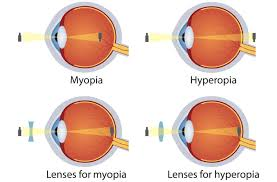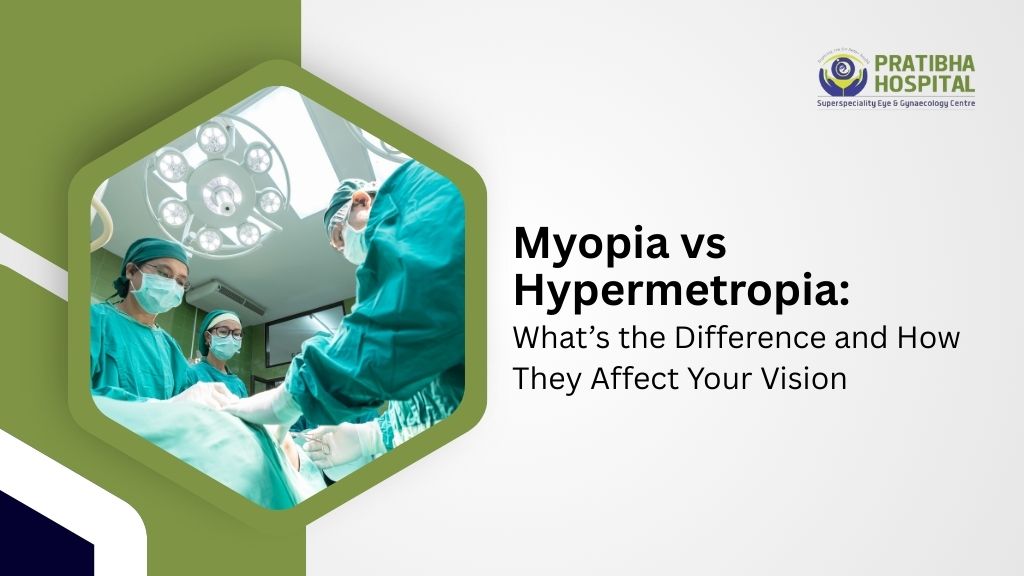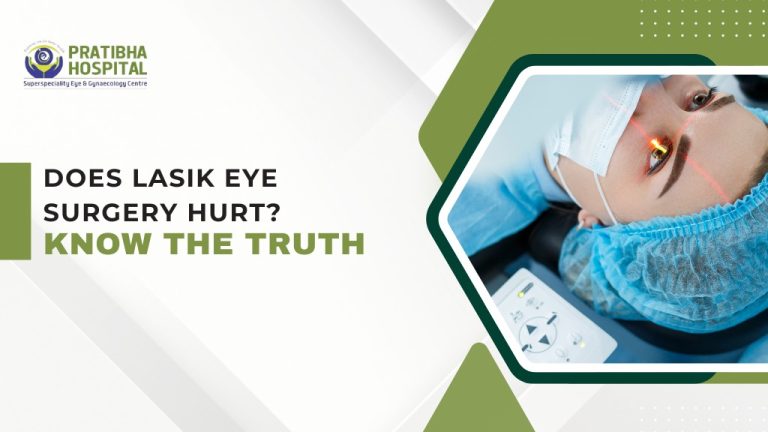Myopia vs Hypermetropia: What’s the Difference and How They Affect Your Vision
Vision shapes how we interact with the world. But what happens when that world starts to blur—either close up or far away? You’ve probably heard the terms myopia and hypermetropia tossed around, maybe even been diagnosed with one of them. While they’re commonly grouped under refractive errors, the truth is, the two conditions work in opposite ways and are not as simple as “can’t see far” or “can’t see near.”
Let’s break the monotony of textbook definitions and dive into what myopia vs. hypermetropia really means—not just for your eyes, but for your lifestyle, long-term vision health, and how you choose to correct it.
A Quick Visual: What Exactly Are We Comparing?
Your eye works the way a camera does. For clear sight, light needs to land at the right spot inside your eye. In nearsightedness, it stops too soon. In farsightedness, it goes too far.
These small shifts in focus are what lead to big changes in how we see the world. But the cause? That’s where it gets interesting.
Why Does This Happen? It’s More Than Just Screen Time
1. Myopia (Nearsightedness):
Myopia often starts in childhood or teenage years. It’s becoming more common now, especially in cities. Using phones a lot plays a part, but it’s not the only reason.
Deeper Causes:
- Elongated eyeball shape
- Genetics (if both parents are myopic, risk increases)
- Less outdoor exposure (natural daylight helps eye development)
Key Symptoms:
- Blurred distance vision (e.g., can’t read the blackboard or road signs)
- Squinting frequently
- Headaches due to eye strain
2. Hypermetropia (Farsightedness):
Often missed in early childhood, hypermetropia quietly shows up as difficulty focusing on close-up tasks. Children who have farsightedness and don’t wear glasses may not do well in school because reading tires their eyes.
The common Causes:
- A shorter eyeball
- Flat cornea
- Weak focusing power (especially with age)
Key Symptoms:
- Blurry vision when reading or using mobile screens
- Frequent eye fatigue
- Burning or aching sensation around the eyes
It’s Not Just About What You Can’t See—It’s About How You Live
The myopia vs hypermetropia debate is rarely framed in terms of real-world impact. Let’s change that.
- A child with myopia may avoid sports, preferring books or screens—but without proper glasses, even that becomes hard. They may fall behind simply because the whiteboard is a blur.
- An adult with hypermetropia may struggle with prolonged reading or close-up work. Teachers, office workers, or even chefs who read recipes all day—these people might silently suffer from uncorrected farsightedness, thinking it’s just “eye tiredness.”
The Science Behind the Lenses: More Than Just Glass
If you read briefly in random articles, you will find that myopia is corrected using concave lenses, and hypermetropia uses convex lenses. That’s right, but let’s understand it better.
- Concave lenses spread out light before it enters the eye, making sure the image forms exactly on the retina.
- Convex lenses, on the other hand, bend light inward to shorten the focus distance.
These aren’t just shapes; they’re tools that correct the way your brain receives the world.
But lenses have evolved. Today, we have:
- High-index lenses (thinner, lighter)
- Aspheric lenses (clearer peripheral vision)
- Photochromic lenses (sunlight-responsive)
- Multifocal or progressive lenses for people dealing with both distance and near vision issues.
Modern Correction Methods: Are Glasses the Only Answer?
No, glasses aren’t the only option, and they’re not always the best one, depending on your lifestyle or the severity of the condition.
Glasses:
Still, it’s the simplest, safest, and most accessible method. Perfect for children or people with changing vision.
Contact Lenses:
Good option for individuals with an active lifestyle or those who don’t like wearing glasses. However, it requires hygiene discipline and may not be suitable for dry eye patients.
LASIK or Laser Surgery:
Corrects the shape of the cornea permanently. Not suitable for everyone, especially children, people with thin corneas, or unstable vision prescriptions.
Vision Therapy (for children):
Sometimes, especially with hypermetropia or mixed refractive errors, vision training can help the eye muscles focus better over time.
What If You Have Both?
Surprisingly, some individuals notice the symptoms of both myopia and hypermetropia at different distances or under different lighting conditions. In such cases, astigmatism is the hidden reason, where the corneal curve is not in the correct condition.
To manage this, optometrists may prescribe toric lenses or bifocal glasses or even recommend refractive surgery after a full eye scan.
A Real Comparison Table (Without Over-Simplifying)

| Feature | Myopia | Hypermetropia |
| Also known as | Nearsightedness | Farsightedness |
| Vision clarity | Near is clear, far is blurry | Far is clear, near is blurry |
| Focus point | In front of retina | Behind the retina |
| Lens type | Concave (diverging lens) | Convex (converging lens) |
| Common age of onset | Childhood or adolescence | Childhood or after age 40 |
| Modern correction | Glasses, contact lenses, LASIK | Glasses, contact lenses, LASIK |
| Related condition | Axial elongation of the eyeball | Short axial length of the eyeball |
Tips for Keeping Vision Clear—No Matter the Condition
- Follow the 20-20-20 rule: Every 20 minutes, look 20 feet away for 20 seconds.
- Spend more time outdoors: Spend more time outdoors. Especially important for kids who have the chance of developing myopia.
- Use proper lighting: Avoid reading in dim light.
- Regular eye checkups: Especially for children and those over 40.
Conclusion
When it comes to myopia vs hypermetropia, the conversation shouldn’t end at “what can’t you see?” It should begin with “How can we help you see better?”
Also read: 10 Signs It’s Time to Visit the Best Eye Hospital
Whether you’re a parent noticing your child squinting at the blackboard or an adult tired of blurry menus at restaurants, knowing the difference—and the solution—can change your day-to-day life.
Eye health is more than vision. It’s clarity, confidence, and comfort.







